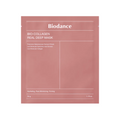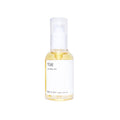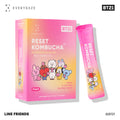Ingredient Focus 6 - Acid : Beauty Secret From Ancient Egypt
Even if you are not a fan of Korean beauty products, you have probably heard the term “chemical peel” from magazines, subway advertisements, blogs and maybe from your friends. Chemical peel is one of the most performed cosmetic procedures (or sometimes non-elective medical procedure) in history, even though laser treatments are gaining more popularity from late 90s due to their convenience. However, there are incomparable amount of studies backing up the efficacy of chemical peels and it is still a standard procedure for all dermatologists and estheticians.
As I mentioned earlier, the history of chemical peels goes back to ancient Egypt. They used to use sour milk for more smooth skin. Because of the fermentation process, sour milk contains lactic acid and glycolic acid (They are both subset of alpha hydroxyl acid)

(Marie Claire : You-Yes, You Can Now Try Cleopatra's Beloved Donkey Milk Bath)
There are similar or sometimes even more invasive versions of primitive chemical peels in other cultures as well. With development of medical science in 17 century Europe, there are more systemized records of chemical peels for freckles, melasma and other skin condition using phenol or croton oil. (Phenol peel is one of the strongest chemical peel until now, so it should be performed by certified dermatologist or surgeon.)

<Beiersdorf: Dr. Paul Gerson Unna>
With the vibrant studies on organic chemistry, specially the salicylic acids derivative due to the asprin, first salicylic acid application peel was performed and recorded by German physician Paul Gerson Unna. (Fun Fact: When he was alive, he had close professional relationship with pharmacist Paul Carl Beiersdorf, and now Beiersdorf is a leading cosmetic company owning brands such as La Prarie, Nivea and Eucerin. What a coincidence, right?) Later in 19 century, TCA peel, Jessner peel, glycolic acid (AHA) peel and many other techniques were invented and performed. Mechanical peels such as herbal peel and micro-dermabrasion were also extensively studied and performed. Later, many branded chemical peels are introduced in the market such as Obagi Blue Peel and Neostrata’s Prosystem. (But the core ingredient still remains the same, TCA and AHA.)
 Obagi Blue Peel
Obagi Blue Peel

Neostrata’s Prosystem
With increasing popularity of acids on skin, cosmetic manufacturers began to pay attention to potential benefit of chemical acids, especially two leading ingredients – AHA such as glycolic acid & lactic acid and BHA such as salicylic acid.

AHA : carboxylic acid
AHA & BHA is actually not a name for specific molecule. Rather, it suggests a structure of molecule. So, organic acids (carboxylic acid) have functional group called carboxylic acid group (–COOH) and there are various number of carbons attached to this “acid” group. For the hydroxy carboxylic acids, generally alcohol is attached in the molecule as well. If you have knowledge on chemistry, you probably already have noticed, AHA and BHA are both hdroxy carboxylic acids. In this general structure, if the carbon attached to alcohol (hydroxyl group) is one carbon away from the acid is AHA (and if two carbons away, it’s called BHA.) So, as long as it meets these criteria, any molecule can be defined as AHA or BHA. The most representative and frequently used AHA is lactic acid and glycolic acid. Because of their small molecular size, they can actively remove some part of the keratin and lightly exfoliate your skin. In cosmetic concentration (mainly 2 to 10 %,) it lightly loosens up the cell adherence, thus increasing the penetration of other ingredients as well. There are reliable researches on glycolic acid’s efficacy on collagen regenerations and improvement on hyperpigmentation, but they can be obtained when the acid concentration is as high as 70%. So, sorry but it is meaningless to discuss this medical grade concentration in cosmetics. In other words, AHA in cosmetic is generally used as pH balance, exfoliation and cell cycle booster.

BHA : salicylic acid
BHA, especially salicylic acid is slightly different from AHA. Because salicylic acid contains a structure called benzene ring. This benzene ring makes these molecules hydrophobic (water-hating) while it melts really well with lipid (oil), so it can easily get through our sebum layer, and penetrate to our skin. (Actually it is BHA is amphiphatic molecule and it interacts well with the plasma membrane of the skin cell with phospholipid bilayer, but I won’t explain it in detail. It’s a little too complex to talk about in the blog article.) So salicylic acid can remove sebum on pores more effectively than AHA. So, salicylic acid is more adequate to oil skin and acne prone skin since it unclogs pores very effectively. However, salicylic acid causes a little more irritation due to its excellent penetration. Therefore, you may feel itchy and slight burning sensation sometimes after use. Of course, most of the time, it stay only temporarily, and goes away quickly. If you have burning sensation or redness for long time, you have to see your physician. Generally cosmetic concentration is 0.5% (Korean Maximum) to 2% (US maximum,) so if you have very extra sensitive skin, take a close look. Generally salicylic acid doesn’t cause rashes or breakout but it may cause redness and irritation.

Apieu Aqua Peeling Cotton Swab Intensive
Relatively strong 8% AHA/BHA complex effectively removes dead skin and unclogs pores. The large cotton ball is easy to swab the entire face. Portulaca Oleracea extracts calms down your irritated skin as well.

Innisfree Skin Clinic Mask BHA
Grapefruit extract and salicylic acid unclogs pore and clams down your acne. Fine cotton adheres on your skin very well and some other non-comedogenic essential oils moisturizes your skin.

CosRX One Step Pimple Clear Pad
This easy to use pre-moisten cotton pad deserves your first step of skincare routine. Anti-inflammatory willow bark water with anti-inflammatory property is used as base and betaine salicylate (salicylic acid derivative) effectively unclogs your pore.

Neogen Code 9 / Oxygen AHA Bubble Peeling Mask
I’m pretty sure you have seen this product from lots of my previous listing. Triple acid complex (lactic acid, tartaric acid, salicylic acid) effectively removes dead skin and unclogs pore. The micro bubble jet system enhance this process and trehalose and vitamin E prevent your skin from dehydration.
Brody, H. J., Monheit, G. D., Resnik, S. S. and Alt, T. H. (2000), A History of Chemical Peeling.Dermatologic Surgery, 26: 405–409. doi:10.1046/j.1524-4725.2000.00505.x
Valenti, Lauren, and Sam Escobar. "Explaining: Cleopatra's Beloved Donkey Milk Bath."Marie Claire. ., 14 Oct. 2016. Web. 07 Apr. 2017.
"Prof. Dr. Paul Gerson Unna." Beiersdorf, Web. 07 Apr. 2017.
Society, The Saturday Evening Post. "Elizabeth Taylor and The Cleopatra Spectacle."The Saturday Evening Post. ., 25 Mar. 11. Web. 07 Apr. 2017.











